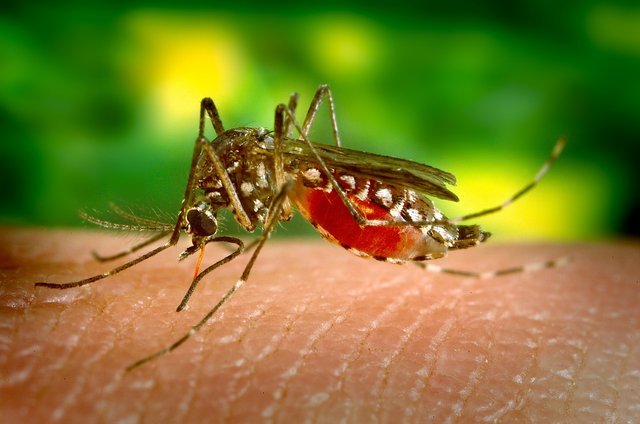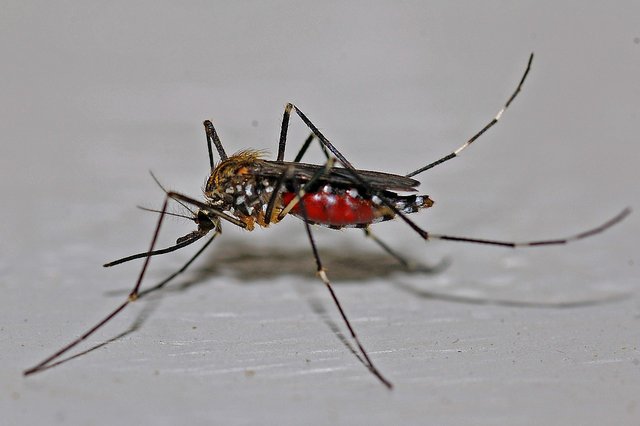As humans, in the world we live today we have got many cohahitants among which some are living things and others, non-living things. Some are friendly and even vital for our survival, while some are foes whose activities endanger our very existence. As the only being with sufficient intelligence, humans have long been concerned with how to make maximum use of what is available in his environment to entrench and elongate his stay on Earth. This quest to ensure human survival have led us into embarking on explorative activities to turn those things that pose life-threatening dangers to our advantage. Today, even snake venom which is ordinarily very deadly is the major component of antivenom used to treat snake bites very successfully.

Source: Pixabay CC0 licensed image
Having said that, one of those human foes with whom we cohabit this sophisticated puzzle called Earth, is mosquitoes. Mosquitoes are our foes because they are not only annoying but, left alone, they can transmit a whole host of deadly viruses. In one of major steps to curtail the dangers of mosquito bites, last year, the US Environmental Protection Agency (EPA) gave a go-ahead order to a Biotechnology start-up, MosquitoMate that it could use its special bacteria-infected mosquitoes to kill other disease-causing wild mosquitoes. However, looking at the title of this article, one may wonder whether it is a good idea to use mosquitoes to fight other mosquitoes, when we can easily do so with insecticides and pesticides. This brings us to the essence of this article, which seeks to provide us with reasons justifying the step taken by the agency.
Deadly species of known mosquito vectors and the havoc they wrech
There are about 3000 different mosquito species that have been studied so far, according to American Mosquito Association. Of this, species in the genera: Culex, Anopheles, and Aedes are the most common and most dangerous of allref. It is estimated that about 700 million people come down with mosquito-related diseases every year out of which about 1 million deaths are recorded annuallyref. The essence of the EPA approved exercise is to reduce the population of mainly Aedes albopictus (also called Asian tiger mosquito or forest mosquito) in the wild. Aedes albopictus is attributed to be the vector that transmits various viral pathogens such as the Chikungunya fever, usutu virus, yellow fever, and dengue fever; also many filarial nematodes like Dirofilaria immitisref. Other than this, Aedes albopictus has also been implicated in the transmission of Zika virus, which its primary vector remains a related mosquito species, Aedes aegyptiref.

Image showing one of the potential effects of Zika virus. Image of a baby with microcephaly (left) compared to a normal baby (right).
Source: wikimedia commons Authored by Brar_j- Flickr under CC By 2.0 license
The MosquitoMate approach
In the MosquitoMate's approach, Aedes albopictus was specially bred to carry the bacteria known as Wolbachia pipientis which interferes with their proper chromosomal formation. The choice of male Aedes albopictus as the vehicle for transmission of the bacteria is informed by the fact that male Aedes albopictus do not bite humans, and so cannot infect humans with the bacteria they are carrying. After some Aedes albopictus has been lab-reared to carry the bacteria, males are separated from females; and then only the laboratory males are released into wild mosquito population where they are expected to infect the wild female population during mating.
The fertilized eggs produced by the wild females following mating with lab-reared males will not hatch owing to the fact that the paternal chromosomes were not properly formed. This, thus, defeats the whole essence of reproduction since no young ones are produced. Hence, overall population diminishes progressively overtime with deaths of parent population. In doing this, the US is following the footsteps of countries (Brazil and Columbiaref, and Australiaref) that have successfully used this approach to significantly reduce the pool of mosquito population, with concomitant decrease in the number of reported mosquito related illnesses.

Source: Pixabay CC0 licensed image
Why the approach is a good idea
Using lab-reared mosquitoes to kill other mosquitoes is a good idea because it enables the use of non-chemical approach in the fight against mosquitoes and diseases they cause. This approach sees to it that only mosquitoes are effectively targeted and eliminated while sparing other insect populations and plants. This wouldn't have been possible where chemical approach is adopted, because chemical approach is broadbased and doesn't selectively target specifics.
As has been demonstrated in other countries, this approach possesses enormous potential to save life. I think the various governments where mosquito-transmitted diseases are endemic and keep tormenting the population, should take a clue from this towards addressing the menace. Respect.
Source references
- Mosquito world: your guide to effective Mosquito control
- Killer mosquitoes are being unleashed in the US to fight disease
- Zika virus in Gabon (Central Africa) — 2007: A new threat from Aedes albopictus
- US government approves killer mosquitoes to fight disease
- Aedes albopictus
- Emergency Department Management Of Mosquito-Borne Illness: Malaria, Dengue, And West Nile Virus
Congratulations @olamseu! You have completed the following achievement on the Steem blockchain and have been rewarded with new badge(s) :
Click on the badge to view your Board of Honor.
If you no longer want to receive notifications, reply to this comment with the word
STOPTo support your work, I also upvoted your post!
Downvoting a post can decrease pending rewards and make it less visible. Common reasons:
Submit
This post has been voted on by the steemstem curation team and voting trail.
There is more to SteemSTEM than just writing posts, check here for some more tips on being a community member. You can also join our discord here to get to know the rest of the community!
Downvoting a post can decrease pending rewards and make it less visible. Common reasons:
Submit
Congratulations @olamseu! You have completed the following achievement on the Steem blockchain and have been rewarded with new badge(s) :
Click on the badge to view your Board of Honor.
If you no longer want to receive notifications, reply to this comment with the word
STOPDownvoting a post can decrease pending rewards and make it less visible. Common reasons:
Submit
Congratulations @olamseu! You have completed the following achievement on the Steem blockchain and have been rewarded with new badge(s) :
Click on the badge to view your Board of Honor.
If you no longer want to receive notifications, reply to this comment with the word
STOPDo not miss the last post from @steemitboard:
Downvoting a post can decrease pending rewards and make it less visible. Common reasons:
Submit